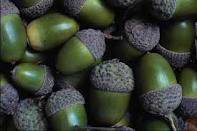Mast years are good times for wildlife
Published 6:15 am Wednesday, October 9, 2019
|
Getting your Trinity Audio player ready...
|
By Steve Roark
Tri-State Outside
Many species of trees have “mast years,” when their seed/fruit production is extraordinarily high. Mast refers to tree seeds that are a food source for wildlife. It comes from the old English word “maest,” referring to tree nuts that have accumulated on the forest floor. Hard mast includes all of the nut trees, including oak (nine local species), hickory (four local species), walnut, beech, chinquapin, and hazelnut. Soft mast includes the fleshy fruits like dogwood, sassafras, blackgum, blueberry, blackberry and cherry. The nut trees in particular tend to have periodic bumper crop years, and when it happens, a mast year is conspicuous.
Several years of low to moderate seed production will suddenly be augmented by a year in where the trees are loaded. How tree species coordinate mast years is still a bit of a mystery, it appears trees communicate with each other through chemical signals passed through the air or through underground root/fungal connections and weather cues. You may notice that mast-consuming species such as squirrels, jays, turkey, grouse, and deer, are more visible during masting years. In poor crop years, wildlife sightings drop as they move away in search of food.
So why do trees go through years of so-so seed production and then suddenly flood the market? Masting is probably an adaptation to aid the trees in escaping the ravages of seed consumers. By alternating between occasional bumper crops and the more usual poor crops, trees conserve energy, enabling them on a given year to produce more seeds than all the seed consumers can eat. Squirrels and jays can stockpile all they want, but there will still be plenty of acorns on the forest floor to sprout into oak seedlings.
A UT wildlife professor once made the observation that bumper crop years often follow drought-stricken summers. This may be a reaction to stress where the trees think they may not survive and so try extra hard to propagate. This year’s hard mast crop appears to be only an average one.
An interesting book to read about mast years and life in the forest is the Peterson field guide called Eastern Forests, by John Kricher and Gordon Morrison.
Steve Roark is a retired area forester from Tazewell, Tennessee.






